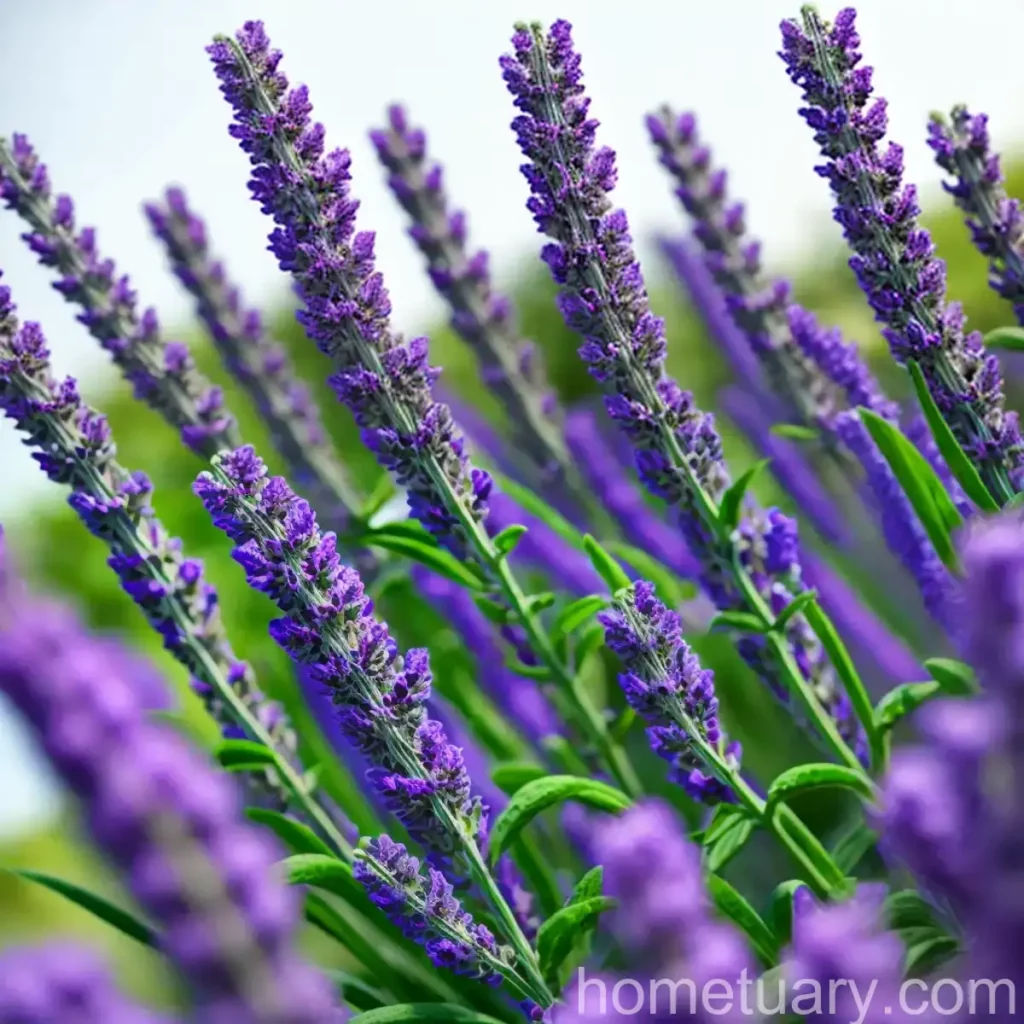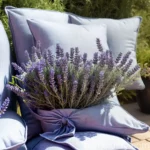Lavandin (Lavandula x intermedia ‘Grosso’): A Comprehensive Guide
Lavandula x intermedia, commonly known as lavandin, is a hybrid plant that is cultivated for its versatile uses and striking characteristics. One of the most popular varieties of lavandin is ‘Grosso’, celebrated for its vibrant flowers and aromatic foliage. In this comprehensive guide, we will delve into the cultivation, uses, care, and maintenance of lavandin, including its essential role in gardening, landscaping, and aromatherapy.
What is Lavandin (Lavandula x intermedia ‘Grosso’)?
Lavandin (Lavandula x intermedia ‘Grosso’) is a hybrid plant that is derived from a cross between Lavandula angustifolia (English lavender) and Lavandula latifolia (spike lavender). This hybridization results in a plant with unique characteristics that combine the desirable features of its parent species. ‘Grosso’, a specific cultivar of lavandin, is particularly admired for its large, deep purple flower spikes, which have a rich and intense fragrance. The plant’s name “Grosso” is indicative of its robust nature.
Key Takeaways – Lavandin (Lavandula x intermedia ‘Grosso’)
- Lavandin is a hybrid plant obtained from the cross between English lavender (Lavandula angustifolia) and spike lavender (Lavandula latifolia).
- ‘Grosso’ is a prominent cultivar of lavandin celebrated for its large and fragrant flower spikes.
- Lavandin is cherished for its diverse uses, including its aromatic and aesthetic qualities.
- The plant requires well-drained soil, ample sunlight, and minimal water to thrive.
- Lavandin possesses ornamental, aromatic, and therapeutic properties, making it a valuable addition to gardens and landscapes.
Now, let’s explore the various aspects of lavandin cultivation, uses, care, and maintenance, providing a comprehensive understanding of this captivating plant.
Culture
Uses
Lavandin has been utilized for numerous purposes throughout history, owing to its aromatic, ornamental, and therapeutic properties. The plant’s uses encompass the following:
- Aromatherapy: The essential oil derived from lavandin is popular in aromatherapy due to its soothing and calming effects. It is often used in massage oils, diffusers, and natural remedies.
- Ornamental Purposes: Lavandin’s striking appearance, characterized by vibrant purple flower spikes and silver-green foliage, makes it a popular choice for ornamental gardens, borders, and flower arrangements.
- Medicinal Applications: The essential oil of lavandin is believed to have various medicinal properties, including anti-inflammatory and analgesic effects. It is used to alleviate headaches, muscle pain, and stress.
- Culinary Use: While not as common as English lavender, lavandin flowers can be used in culinary applications, such as flavoring desserts, infusing sugar, or creating herbal teas.
Water
Lavandin thrives in well-drained soil and prefers dry to moderately moist conditions. Overwatering can lead to root rot and other issues. As such, it is essential to allow the soil to dry out between watering sessions. Once established, lavandin is relatively drought-tolerant and requires minimal irrigation.
Sunlight
Lavandin requires ample sunlight to thrive and produce an abundance of flowers. It is best grown in full sun, receiving at least 6-8 hours of direct sunlight per day. In regions with intense heat, providing some afternoon shade can prevent stress on the plant.
Fertilizer
Lavandin is not considered a heavy feeder and generally thrives in moderately fertile soil. When necessary, a balanced fertilizer with a lower nitrogen content can be applied in spring to promote healthy growth and flowering. Organic amendments such as compost can also be beneficial for soil enrichment.
Soil
Lavandin prefers well-drained, slightly alkaline to neutral soil with a pH range between 6.7 and 7.3. Sandy or gravelly soils with good aeration are ideal for preventing waterlogging and ensuring the plant’s root health. Incorporating organic matter into the soil can improve its structure and fertility.
Pruning
Pruning lavandin is essential to maintain its shape, promote flowering, and prevent woodiness. The plant should be pruned immediately after flowering to encourage new growth and prevent the formation of woody stems. Flower spikes can be cut back, leaving some foliage intact to support the development of new shoots.
Propagation
Lavandin can be propagated through various methods, including:
- Seed Propagation: While lavandin can be grown from seed, it is important to note that hybrid plants may not come true from seed, resulting in variations in flower color and fragrance.
- Stem Cuttings: Propagation from stem cuttings is a reliable method to cultivate lavandin. Select healthy, non-flowering stems and root them in a well-draining rooting medium.
- Division: Lavandin can be divided through the separation of rooted offsets, particularly during the plant’s dormant season. This method allows for the propagation of identical plants.
Container Popularity
Lavandin is well-suited for container cultivation, making it a popular choice for individuals with limited garden space. Its compact growth habit and aromatic foliage make it an excellent addition to patios, balconies, and small gardens. When grown in containers, lavandin benefits from well-drained potting mix and proper drainage to prevent waterlogging.
Container Common Diseases
When grown in containers, lavandin may be susceptible to certain diseases, including:
- Root Rot: Overwatering and poor drainage in containers can lead to root rot, causing the plant to wilt and its foliage to yellow. To prevent this, ensure that containers have adequate drainage and allow the soil to dry out between watering.
- Powdery Mildew: Under conditions of high humidity and poor air circulation, lavandin in containers may develop powdery mildew, characterized by a white powdery growth on the leaves. Improving air circulation and avoiding overhead watering can help prevent this fungal disease.
Disease Diagnosis
Diagnosing and addressing plant diseases is crucial for maintaining the health and vigor of lavandin. Common diseases that can affect lavandin include:
- Root Rot: Identification of root rot involves observing wilting, yellowing, and stunted growth in the plant. Additionally, the roots may appear discolored, soft, and mushy upon inspection.
- Powdery Mildew: The presence of powdery, white fungal growth on the upper surface of leaves, coupled with leaf distortion and yellowing, indicates an infestation of powdery mildew.
Common Pests
Lavandin can be vulnerable to certain pests, although it is generally less susceptible compared to other ornamental plants. Common pests that may affect lavandin include:
- Aphids: These small, soft-bodied insects feed on the plant’s sap, often causing distorted growth and the development of sticky honeydew on the foliage. Natural predators such as ladybugs and lacewings can help control aphid populations.
- Spider Mites: Spider mites are tiny arachnids that can infest lavandin, particularly in hot and dry conditions. They cause stippling and webbing on the leaves, leading to decreased plant vigor. Regularly spraying the plant with water can help deter spider mites.
Botanist’s Tips
Lavandin Plant Care
To ensure the optimal health and performance of lavandin, the following care tips are recommended:
- Well-Drained Soil: Provide lavandin with well-drained soil to prevent waterlogging and root rot. Amending heavy clay soils with sand or gravel can improve drainage.
- Minimal Watering: Allow the soil to dry out between watering sessions, particularly once the plant is established. Lavandin is tolerant of drought conditions.
- Full Sun Exposure: Position lavandin in an area that receives ample sunlight to promote robust growth and prolific flowering.
- Pruning After Flowering: Prune lavandin immediately after flowering to maintain its compact shape and encourage new growth.
- Regular Monitoring: Monitor the plant for signs of pests and diseases, addressing any issues promptly to prevent widespread infestations.
Fun Facts
- Lavandin is commonly cultivated in the Provence region of France, where the favorable climate and soil conditions contribute to its exceptional growth and fragrance.
- The aromatic qualities of lavandin make it a popular choice for the production of essential oils, which are used in perfumery, aromatherapy, and natural skincare products.
- Lavandin can attract pollinators such as bees and butterflies, contributing to the biodiversity of garden and landscape environments.
Links to External Resources
For further information on lavandin (Lavandula x intermedia ‘Grosso’) and related topics, explore the following external resources:
- Royal Horticultural Society – Lavandula x intermedia ‘Grosso’
- University of Maryland Extension – Growing Lavender
- North Carolina State University – Lavender Production, Products, Markets, and Entertainment Farms
- Aromatherapy and Essential Oils – Lavandin Essential Oil
- National Pesticide Information Center – Spider Mites
In conclusion, lavandin (Lavandula x intermedia ‘Grosso’) stands as a captivating and versatile plant that contributes to gardens, landscapes, and well-being through its aromatic, ornamental, and therapeutic attributes. By understanding its cultivation, uses, care, and maintenance, enthusiasts and horticulturists alike can appreciate the distinctive qualities of this hybrid lavender and its enduring appeal in various settings.















